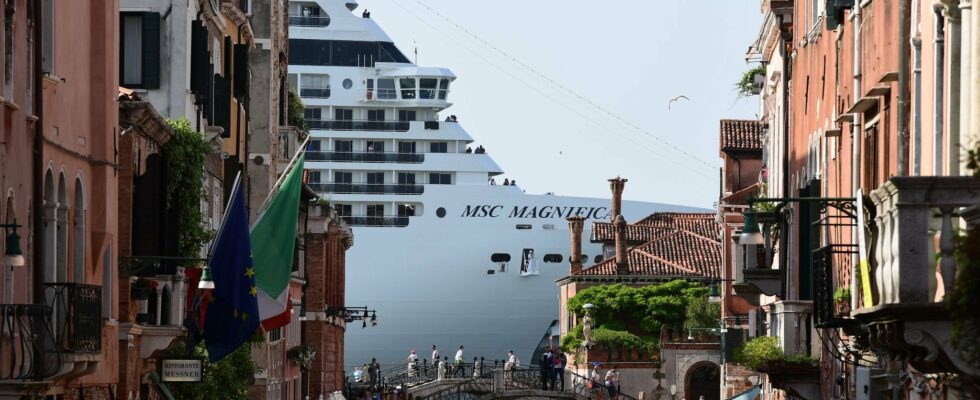“Tourists Go Home”. The inscription no longer simply adorns the walls of Barcelona’s Ramblas. It spreads over those of the narrow streets of Florence, in the shadow of Brunelleschi’s dome, but also increasingly in the more peripheral districts. The buildings near the “Duomo” house mainly foreign visitors who flock in mass in this summer of 2024, and few residents of the city.
Enough to make the Florentines take up the slogan of the Barcelonans fed up with mass tourism. They almost come to look with nostalgia at the images of their deserted neighborhoods when Covid-19 was raging.
2023 has definitively archived the pandemic. 14 million tourists visited Florence and more than 52 million, Tuscany! The historic city center of one of the most beautiful Italian art cities lost 4,000 inhabitants between 2014 and 2022 while the number of apartments listed on Airbnb exploded from less than 6,000 to nearly 15,000. Residents are having a hard time being sensitive to the argument of the tourist bonanza when they see that the average cost of ordinary monthly rents jumped by 42%, while consumer prices increased by 15%.
Americans are spending more
Faced with growing discontent, Florence’s new mayor, Sara Funaro, is trying to calm things down. “We must avoid what happened in Barcelona with its demonstrations,” she warns. “We can do anything except demonize tourism, and even less so American tourism.”
On the barriers of a luxury residence construction site along the Arno River, a Florentine had tagged: “Yankees Go Home”. Historically, they have always been the most in love with the city that was the birthplace of the Renaissance. But in this summer of 2024, the Italian Ministry of Tourism is taking note of a real wave of American visitors. The number of flights between the United States and Italy has doubled compared to last year. Americans represent 44% of foreigners spending their holidays in the peninsula. They were already 35% last year. In 2023, the number of tourists crossing the Atlantic jumped by 39.5% to 4.1 million, almost double all those from Asia.
Enough to prevent the fragile Italian economy from falling into recession. Because the “Made in USA” tourist is the one with the greatest purchasing power, driven by a strong dollar against the euro. According to the latest report on international tourism from Bankitalia (the Italian central bank), the “Yankee” visitor is the one who spends the most with an average of 185 euros per night in 2023, a sharp increase compared to the 126 euros spent in 2021. It is also the one whose stay is the longest with an average of 10.6 nights.
Timid measures
Industry professionals are celebrating an exceptional season, with forecasts of 1.5 million additional tourists and growth of 3 million overnight stays. This improvement is largely based on American attendance, which compensates for the loss of certain wealthy customers. Asians due to the pandemic, then Russians since the outbreak of the war in Ukraine.
“Without tourists we remain an open-air museum with empty restaurants, these inscriptions against them represent a worrying signal”, comment the representatives of the Florentine commercial sector. “We must work to protect residents and promote sustainable tourism”, pleads its mayor Sara Funaro who has decided to block new short-term rentals in its historic center. A measure already brandished last fall by the previous mayor, who offered their owners tax breaks for three years if they agreed to transform their current leases into classic rentals.
All Italian art cities share this weariness with overtourism, but not all of them respond to it in the same way. Since April 25, 2025, Venice has imposed a 5-euro entrance fee for daily visitors on days when the flow is too high. A symbolic measure since it has not yet been able to stem the tide of 14 million tourists who flood the lagoon each year. The 2.2 million euros collected so far by the municipality are just a drop in the ocean of the expenses it must face. Italy, which currently chairs the G7, will organize the summit dedicated to tourism in Florence this fall. The government will have to take this opportunity to introduce a series of measures to more strictly regulate short-term rentals.
